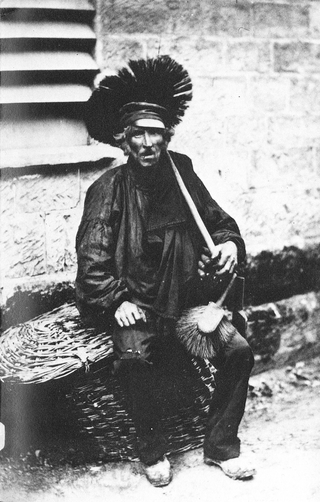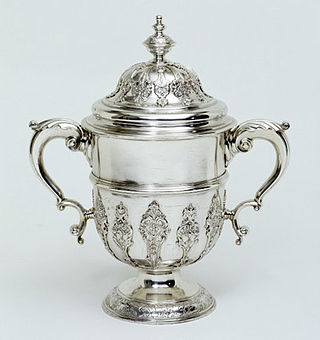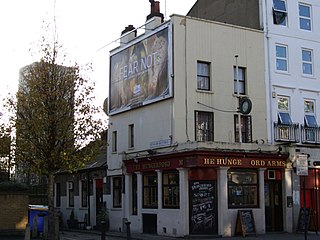Judgment
The Court held that both Armory and Delamirie had property rights in the jewel, even though neither was the true owner. Sir John Pratt CJ held they each have a right to possession that is enforceable against everyone except those with a greater right to the possession. The true owner of the jewel was not relevant; the Court was only concerned with who had a better right to possession. The priority of rights to possession says that a finder has better title to property that he or she finds over everyone except the true owner, and Armory thus had full title to the jewel. The Court found in favour of Armory. Since the jewel was not produced at the trial, Armory was awarded the maximum value that a jewel of that form could have (under the principle that a wrongdoer should not be able to derive gain, i.e. uncertainty of damages, from the effects of his wrongdoing).
The report shows the following text:
The plaintiff being a chimney sweeper's boy found a jewel and carried it to the defendant's shop (who was a goldsmith) to know what it was, and delivered it into the hands of the apprentice, who under pretence of weighing it, took out the stones, and calling to the master to let him know it came to three halfpence, the master offered the boy the money, who refused to take it, and insisted to have the thing again; whereupon the apprentice delivered him back the socket without the stones. And now in trover against the master these points were ruled:
1. That the finder of a jewel, though he does not by such finding acquire an absolute property or ownership, yet he has such a property as will enable him to keep it against all but the rightful owner, and subsequently may maintain trover.
2. That the action well lay against the master, who gives a credit to his apprentice, and is answerable for his neglect, Jones v Hart , Salk 441. Cor. Holt CJ [3] Mead v Hammond , supra. Grammer v Nixon , [4] post, 653.
3. As to the value of the jewel several of the trade were examined to prove what a jewel of the finest water that would fit the socket would be worth; and the Chief Justice directed the jury, that unless the defendant did produce the jewel, and shew it not to be of the finest water, they should presume the strongest case against him, and make the value of the best jewels the measure of their damages: which they accordingly did.
Larceny is a crime involving the unlawful taking or theft of the personal property of another person or business. It was an offence under the common law of England and became an offence in jurisdictions which incorporated the common law of England into their own law, where in many cases it remains in force.
The defence of property is a common method of justification used by defendants who argue that they should not be held liable for any loss and injury that they have caused because they were acting to protect their property.

A chimney sweep is a person who clears soot and creosote from chimneys. The chimney uses the pressure difference caused by a hot column of gas to create a draught and draw air over the hot coals or wood enabling continued combustion. Chimneys may be straight or contain many changes of direction. During normal operation, a layer of creosote builds up on the inside of the chimney, restricting the flow. The creosote can also catch fire, setting the chimney alight. The chimney must be swept to remove the soot.

Paul Jacques de Lamerie was a London-based silversmith. The Victoria and Albert Museum describes him as the "greatest silversmith working in England in the 18th century". He was being referred to as the "King's silversmith" in 1717. Though his mark raises the market value of silver, his output was large and not all his pieces are outstanding. The volume of work bearing de Lamerie's mark makes it almost certain that he subcontracted orders to other London silversmiths before applying his own mark.
Replevin or claim and delivery is a legal remedy, which enables a person to recover personal property taken wrongfully or unlawfully, and to obtain compensation for resulting losses.
In tort law, detinue is an action to recover for the wrongful taking of personal property. It is initiated by an individual who claims to have a greater right to their immediate possession than the current possessor. For an action in detinue to succeed, a claimant must first prove that he had better right to possession of the chattel than the defendant, and second, that the defendant refused to return the chattel once demanded by the claimant.

A treasure trove is an amount of money or coin, gold, silver, plate, or bullion found hidden underground or in places such as cellars or attics, where the treasure seems old enough for it to be presumed that the true owner is dead and the heirs undiscoverable. An archaeological find of treasure trove is known as a hoard. The legal definition of what constitutes treasure trove and its treatment under law vary considerably from country to country, and from era to era.
Trover is a form of lawsuit in common law jurisdictions for recovery of damages for wrongful taking of personal property. Trover belongs to a series of remedies for such wrongful taking, its distinctive feature being recovery only for the value of whatever was taken, not for the recovery of the property itself.

Lost, mislaid, and abandoned property are categories of the common law of property which deals with personal property or chattel which has left the possession of its rightful owner without having directly entered the possession of another person. Property can be considered lost, mislaid, or abandoned depending on the circumstances under which it is found by the next party who obtains its possession.
Ex turpi causa non oritur actio is a legal doctrine which states that a plaintiff will be unable to pursue legal relief and damages if it arises in connection with their own tortious act. Particularly relevant in the law of contract, tort and trusts, ex turpi causa is also known as the illegality defence, since a defendant may plead that even though, for instance, he broke a contract, conducted himself negligently or broke an equitable duty, nevertheless a claimant by reason of his own illegality cannot sue. The UK Supreme Court provided a thorough reconsideration of the doctrine in 2016 in Patel v Mirza.
In English law, the assize of novel disseisin was an action to recover lands of which the plaintiff had been disseised, or dispossessed. It was one of the so-called "petty (possessory) assizes" established by Henry II in the wake of the Assize of Clarendon of 1166; and like the other two was only abolished in 1833.
Conversion is an intentional tort consisting of "taking with the intent of exercising over the chattel an ownership inconsistent with the real owner's right of possession". In England and Wales, it is a tort of strict liability. Its equivalents in criminal law include larceny or theft and criminal conversion. In those jurisdictions that recognise it, criminal conversion is a lesser crime than theft/larceny.
Scott v. Shepherd 96 Eng. Rep. 525, commonly known as the "flying squib case," is an important English tort law case on remoteness and the principle of novus actus interveniens as it related to the division between trespass and case.

Thomas Haslem v. William A. Lockwood, Connecticut, (1871) is an important United States case in property, tort, conversion, trover and nuisance law.

Coggs v Bernard (1703) 2 Ld Raym 909 is a landmark case both for English property law and contract law, decided by Sir John Holt, Chief Justice of the King's Bench. It sets out the duties owed by a bailee – someone in possession of property owned by another.
Priestley v Fowler [1837] 150 ER 1030 is an old English tort law case, which introduced the old rule of common employment. This is idea that the employer is not liable for injuries caused by one employee to another in the course of their employment. The rule was removed in its entirety in the United Kingdom by the Law Reform Act 1948.

Belchier v Parsons (1754) 96 ER 908 is an English trusts law case, which stands as one of the earliest formulations of the prudent person rule.

Thomas v Sorrell [1673] EWHC (KB) J85 is an English law case, concerning licences. It has been cited in cases in relation to land but has no direct link to land e.g. occupation. It was landmark decision in the law of alcohol licensing and summarizes centuries of law as to licences — it sets out the bold principles of licences of many kinds.

The Chimney Sweep is a 1906 French silent film directed by Georges Méliès.
John Cunningham was a Scottish goldsmith and merchant burgess of Edinburgh.









